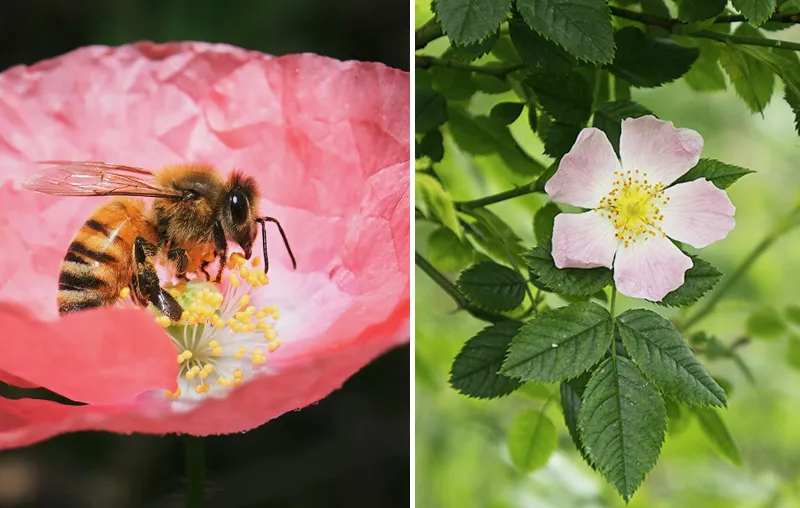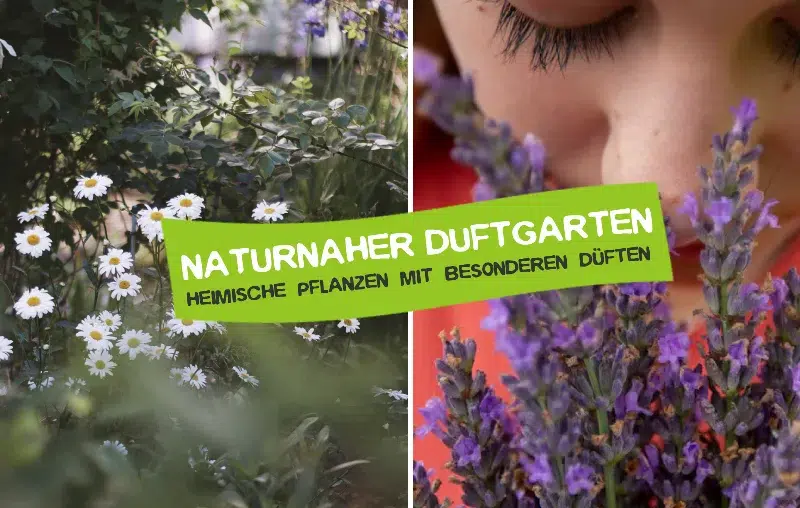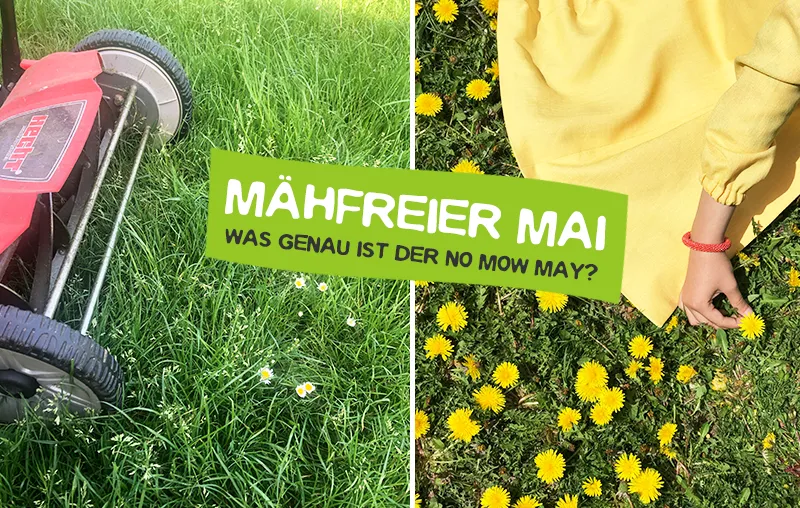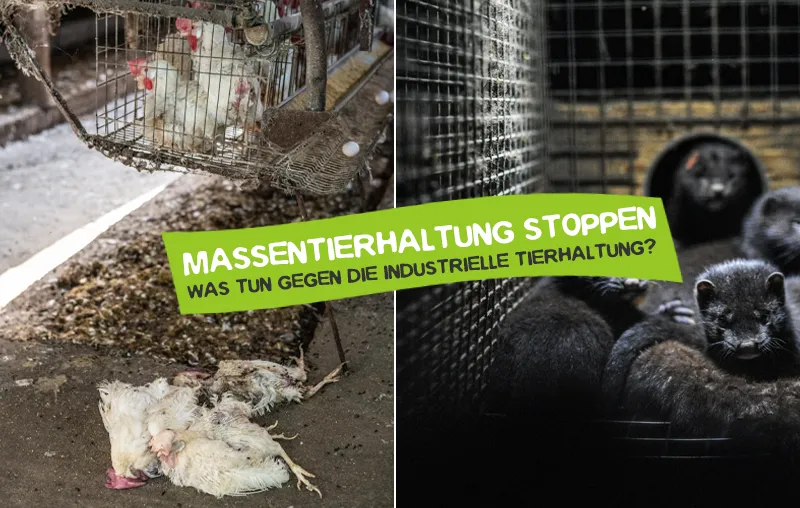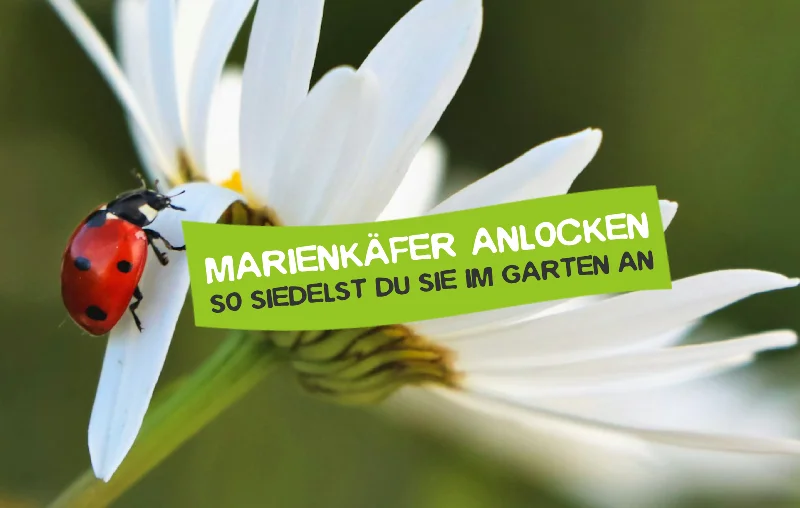Are you still looking for bee-friendly roses for your garden? Then you've come to the right place! The rose has been known as the "queen of flowers" since ancient times due to its unique splendor. However, over the centuries, many cultivated varieties have unfortunately been created that have little place in a real bee garden.
By choosing wild rose species that are not only beautiful, but are also native to our area and provide food, nesting sites and shelter for wild bees, you can therefore make a real difference in the The fight against insect mortality make
In this article, I will therefore introduce you to ecologically valuable, native wild rose species that magically attract wild bees and other insects. Let's go!
Why Choose Bee-Friendly Wild Roses Over Cultivated Varieties?
Rose cultivation has its origins in China, where it Cultivated as an ornamental plant for gardens as early as 2700 BC became. The business is still thriving today - but over the centuries, more and more rose varieties have been created that neither occur in nature, nor are they interesting for bees - and yet adorn many gardens today.
Above all, the Wild bees need our help because they Threatened with extinction are.
I would therefore like to briefly and concisely the motivating reasons to prefer bee-friendly roses to conventional cultivated roses:
- Utilize high attraction for pollinators: Wild roses are often more open in their structure and make it easier for bees and other insects to reach pollen and nectar. Cultivated roses, on the other hand, often have double, denser flowers that are more difficult to access.
- Benefit from high resistance: Native wild roses are adapted to the local climate and soil conditions, which makes them more resistant to diseases and extreme climatic events. They are also considered undemanding because they require less care and maintenance than cultivated roses. natural resources (e.g. water and fertilizer).
- Promote biodiversity: By planting wild roses, the native flora is strengthened and the biodiversity supported. In this way, you create new habitats for a variety of animal species - and not just for pollinators such as wild bees.
- Increase interest in natural gardens: Wild roses look great! That's why they offer you a great opportunity to convince family and friends to plant bee-friendly roses in their garden too.
10 Native Wild Roses That Attract Bees

Motivated enough? 🙂 Then we can now dedicate ourselves together to the native roses, whose flowers bees and other insects in German gardens particularly like to fly to!
So much in advance: The musk rose (Rosa moschata), the red tufted rose (Rosa moyesii), the moss rose (Rosa centifolia "Muscosa") or the potato rose (Rosa rugosa), for example, are not included. The latter is even invasive and displaces native species.
The following native wild roses on the other hand, are really bee and insect friendly! So plant them in your nature or rose garden!
1. Sweet Briar Rose (Rosa rubiginosa)
The open, white-pink flowers of the vine rose exude a characteristic apple scent, which numerous nectar and pollen collectors attracts. In addition to wild bees, many caterpillars and beetles also settle on the rose plant.
The thorns also make the bee-friendly vine rose an important Bird sanctuary. Due to its size, the wild garden rose is also very suitable for use in an insect-rich Wild hedge. All in all, my personal favorite and my absolute recommendation for everyone Natural garden!
If you like, you can get the vine rose here online at the Horstmann nursery*.
Important facts about the vine rose:
- Dimensions: About 1.5-2.5 meters high and up to 2 meters wide
- Location: Sun to partial shade
- Floor: Dry, well-drained and sandy to loamy
- Other: The rose hips of the rose serve as a food source for birds
2. French Rose (Rosa gallica)
In fact, the vinegar rose, which is native to Germany, is the original plant of countless rose varieties. Bees appreciate its bright pink to purple-colored flowers as a popular Pollen and nectar suppliers. Caterpillars, butterflies, flies and beetles also love the wild rose.
As it only reaches a height of up to one meter, it serves maximum in a tub as a privacy screen. My experience is that the insect-friendly rose can be integrated very well into the Front row in front of a higher wild shrub hedge can set.
Important facts about the vinegar rose:
- Dimensions: About 0.5-1 meter high and 1-2 meter wide
- Location: Sun to partial shade
- Floor: Fresh, nutrient-rich and humus-rich
- Other: Also provides food and shelter for many bird species
3. Clustered Dog Rose (Rosa corymbifera)
Another recommendation for a bee-friendly rose in the garden is the dog rose. Bees appreciate the white-pink blooming rose blossoms an important source of food in May and June.
The wild rose is also fairly undemanding and, thanks to its growth habit, is really ideal for a dense natural hedgewhich also provides a habitat for birds and many other garden animals.
Important facts about dog rose:
- Dimensions: About 1.5-2 meters high and up to 2.5 meters wide
- Location: Sun to partial shade
- Floor: Fresh to dry, well-drained and nutrient-rich
- Other: Rosehips are rich in vitamin C and are suitable for jam
Tip: By the way, I have also written a detailed blog post for you with the most insect-friendly trees compiled. Be sure to take a look there, too!
4. May Rose (Rosa majalis)
Honey bees and wild bees love the early flowering ones, pink to red flowers of the cinnamon rose. It is a robust, native wild form and is often used by natural gardeners as an addition to a wild hedge. The dense, thorny rose bush also provides food and shelter for many native bird species.
If you like, you can get the Cinnamon rose here online at Horstmann Nursery*.
Important facts about the cinnamon rose:
- Dimensions: Up to 1.5 meters high and about 2 meters wide
- Location: Sunny to semi-shady location
- Floor: Moist to fresh and fertile
- Other: The rose hips of the wild rose are edible
5. Redleaf Rose (Rosa glauca)

Unfortunately, the pike rose is really rare to find in German gardens - and is therefore already considered a endangered species. With its magnificent pink flowers that bloom in June and July, it is a real eye-catcher and Absolute insect magnet.
Above all, it attracts Honey bees and countless wild bees, but also flies, beetles and butterflies on. As the native wild rose grows very tall, you can use it very well, for example, as a Hedge plant insert
If you like, you can get the Pike rose here online at Horstmann Nursery*.
Important facts about the pike rose:
- Dimensions: About 2-3 meters high and up to 3 meters wide
- Location: Sun to partial shade
- Floor: Dry and nutrient-poor soil
- Other: Birds value the rose as a source of food and shelter
6. Sherard’s Downy Rose (Rosa sherardii)
If you are looking for bee-attracting garden roses, then you absolutely must get to know the hardy velvet rose. Due to its height, it is also suitable as a Hedge plant and attracts with its irose blossoms blooming and fragrant in June and July many bees and other insects.
Important facts about the velvet rose:
- Dimensions: Up to 2.5 meters high and 1 meter wide
- Location: Full sun
- Floor: Fresh to dry, well-drained, normal garden soil
- Other: Birds use them as a source of food and protection from predators
7. Burnet Rose (Rosa pimpinellifolia)
The Bibernell rose is also one of the most important wild roses for insects. Its beautiful white flowers, which bloom in May and June, are particularly attractive to wild bees, as they offer the busy insects plenty of pollen and nectar deliver.
Compared to other garden roses, it is but not quite as big. This makes it more suitable for the row in front of an insect-friendly wild shrub hedge, for example.
If you like, you can get the Beavernell rose here online at Horstmann Nursery*.
Important facts about the Bibernell rose:
- Dimensions: Up to 1.5 meters high and 2 meters wide
- Location: Sun to partial shade
- Floor: Normally dry and well permeable
- Other: The wild rose also provides important nesting sites for many bird species
8. Downy Rose (Rosa tomentosa)
If you have a Create bee friendly garden want, then you should during planning Also be sure to consider the felt rose.
The native wild rose is known for its dense, felty leaves, which not only look beautiful but also provide good protection and nesting opportunities for insects (and birds). In addition, its white to pale pink flowers especially many pollen collectors, such as honey bees and wild bees.
Important facts about the felt rose:
- Dimensions: Up to 2 meters high and 80 centimetres wide
- Location: Sun to partial shade
- Floor: Fresh to dry, well-drained, loamy, normal garden soil
- Other: Provides birds with a nutritious and protective habitat
9. Apple Rose (Rosa villosa)
The apple rose also seduces with its slightly fragrant, pink to carmine-red flowers many species of wild bees in May and June, but also caterpillars, butterflies and beetles.
As it grows quite tall, you can use it as a Hedge plant which provides a home not only for insects but also for birds.
If you like, you can get the Apple rose here online at Horstmann Nursery*.
Important facts about the apple rose:
- Dimensions: Up to 2 meters high and 1.5 meters wide
- Location: Sun to partial shade
- Floor: Fresh to dry and well-drained
- Other: Also an important bird protection and food tree
Tip: In another blog article, I have also given you my best tips for a Bird friendly garden compiled. So if you're interested in this topic, be sure to take another look.
10. Dog Rose (Rosa canina)
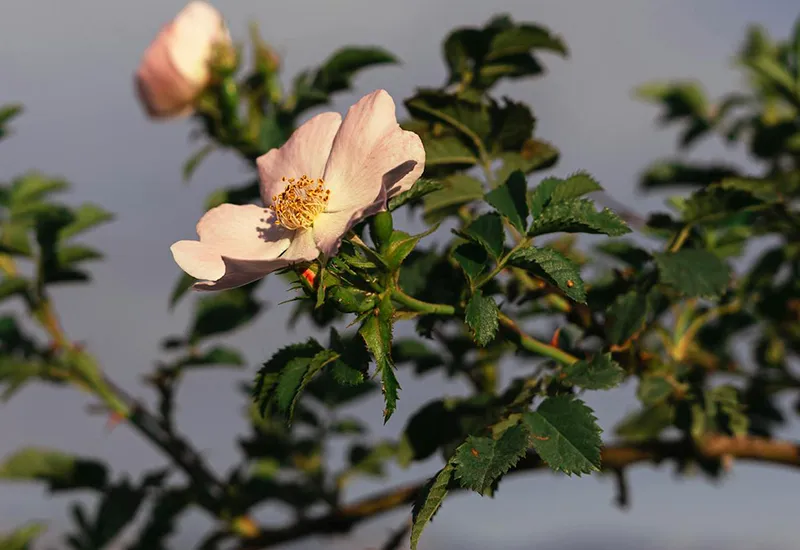
The dog rose is an upright, tall wild rose bush - and magnetically attracts honey bees and wild bees. The reason for this is its open, pink flowerswhich create a rich supply of nectar and pollen in May and June.
If you want to save the wild bees, you should So be sure to plant wild rose in your garden. As it grows quite tall, it also does very well in a wild shrub hedge, for example.
If you like, you can get the Dog rose here online at Horstmann Nursery*.
Important facts about the dog rose:
- Dimensions: About 1-3 meters high and up to 2 meters wide
- Location: Sun to partial shade
- Floor: Nutrient-rich, fresh and permeable to loamy
- Other: Also an important woody plant for caterpillars, butterflies, beetles and birds
Planting Bee-Friendly Roses Native to Your Region
Now you know many roses for bees and other insects in your garden. Selecting and planting the wild roses mentioned above is a conscious decision to support our native flora and fauna.
Since you are making your contribution in this way against the Species Extinction you will be rewarded as a hobby gardener with a lively humming and buzzing hard-working pollinators in the garden.
Finally, it is important to me that you know that there are some other native wild roses that are good for bees. The Leafy rose (Rosa jundzillii), the Leatherleaf rose (Rosa caesia) or the Hanging fruit rose (Rosa pendulina) are just a few more examples.
Just take a look at here all wild roses at the Horstmann nursery* an.
And if you've now caught the natural garden fever, I really must recommend the book "Wild & colorful: Designing natural gardens with native plants" by Simone Kern, which you get here*. Among other things, you'll find creative sample beds and lots of inspiration 🙂
"If the bee disappeared off the surface of the globe, then man would have only four years of life left. No more bees, no more pollination, no more plants, no more animals, no more man."
Albert Einstein (more under Species protection quotes)
Do you have any questions, suggestions or do you know of other roses that bees really love and need? Then, as always, please write me a comment!
Stay insect-friendly and close to nature,

PS: I have also provided you with a list of the most bee-friendly berry bushes compiled. Be sure to check it out next!

